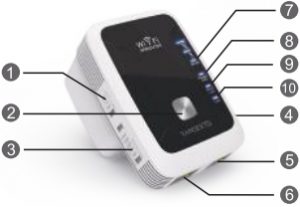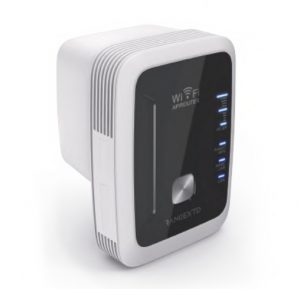This RangeXTD WiFi Range Extender Manual is a guide for people who want to extend their wireless network. It outlines the steps needed to install and configure your new range extender, as well as troubleshooting tips should you run into any problems during setup.
Sections in this Manual
Manufactured by Strong Current
Introduction
RangeXTD can be used for providing WiFi service in big areas for home and commercial use. It can take an existing 802.11n wireless signal of your wireless router to repeat and extend its range. RangeXTD supports 2.4G wireless network connection, and it can support 2.4G transmission speeds of up to 300Mbps. It has 2X built-in antennas and provides excellent wireless performance, transmission rates and stability technology that automatically avoids channel conflicts using its channel selection feature.
Package Contents
- 1 x RangeXTD Wi-Fi AP/Router (the Device)
- 1 x EU plug
- 1 x US Plug
- 1 x Quick Installation Guide
- 1 x RJ45 Cable
Hardware Overview
Default Parameters
- URL: 192.168.7.234
- Login Password: admin
- Wi-Fi SSID: RangeXTD
- Wi-Fi Key: no

- C) Power On/Off
- FPS Button
- Mode Selector
- Reset Button
- WAN/LAN Port
- LAN Port
- 3 x Wi-Fi Single
- Power/WPS LED
- WAN/LAN LED
- LAN LED
